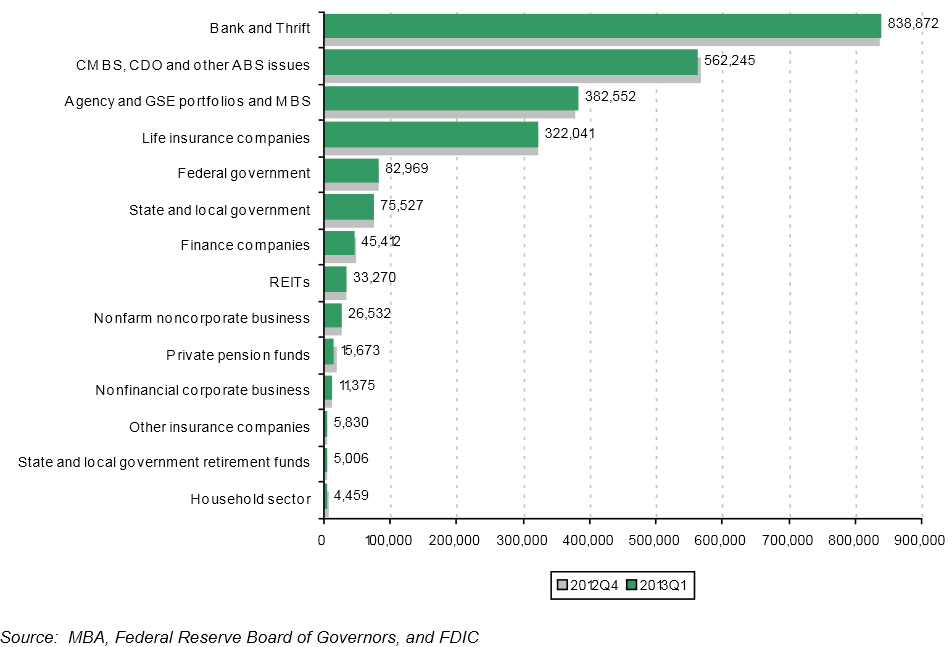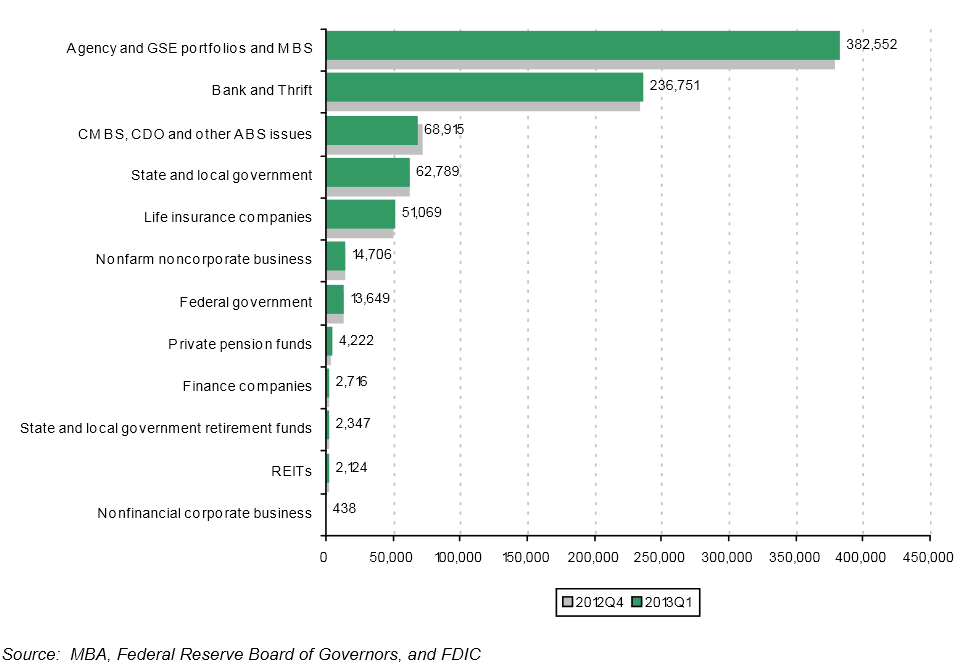Commercial and multifamily mortgage debt fell by $4.9 billion in the first quarter of 2013. The total debt in the first quarter was $2.41 trillion, down 0.2 percent from the fourth quarter of 2012 and the first quarterly decrease since the third quarter of 2011.
The Mortgage Bankers Association (MBA) said that outstanding multifamily mortgage debt increased by $4.1 billion or 0.5 percent in the quarter to a total of $842 billion. Most investment sectors increased their multifamily holdings during the quarter.
"After five quarterly increases, the amount of commercial and multifamily mortgage debt outstanding fell slightly in the first quarter," said Jamie Woodwell, MBA's Vice President of Commercial Real Estate Research. "Banks and thrifts, Fannie Mae, Freddie Mac and FHA increased their commercial and multifamily holdings, but the balance of loans in commercial mortgage-backed securities resumed its decline."
At 35 percent of the total, commercial banks continue to hold the largest share of commercial and multifamily mortgage debt. Commercial mortgage-backed securities (CMBS), collateralized debt obligations (CDOs), and other asset backed securities (ABS) are the second largest holders with $562 billion or 23 percent of the total and 16 percent or $383 billion was held by Agency/GSE portfolios and MBS. Life insurance companies hold $322 billion or 13 percent.

Breaking out just multifamily debt, the largest share debt was held by Agency and GSE portfolios and MBS, a total of 382.6 billion or 45.4 percent of the total. This was an increase of $3.7 billion quarter-over-quarter or 1 percent. Commercial banks increased their holdings by 2.7 billion or 1.2 percent to a total of $236.8 billion or 28.1 percent of the total. CMBS, CDO, and other ABS issues decreased their multifamily holdings by $3.5 billion or 4.8 percent but remained the third largest holder of multifamily debt with a total of $68.9 billion or an 8.2 percent share. State and local governments, the fourth largest holder of this debt, increased their holdings during the quarter by $577 million or 0.9 percent.
The largest increase in holdings on a percentage basis was among Real Estate Investment Trusts (REIT) which rose by 16 percent. The largest percentage decline was local government retirement funds (-10 percent.).

MBA's analysis is based on data from the Federal Reserve Board's Flow of Funds Account of the United States and the Federal Deposit Insurance Corporation's Quarterly Banking Profile. The analysis summarizes the holdings of loans or, if the loans are securitized, the form of the security. For example, many life insurance companies invest both in whole loans for which they hold the mortgage note (and which appear in this data under Life Insurance Companies) and in CMBS, CDOs and ABS for which the security issuers and trustees hold the note (and which appear here under CMBS, CDO and other ABS issues).







